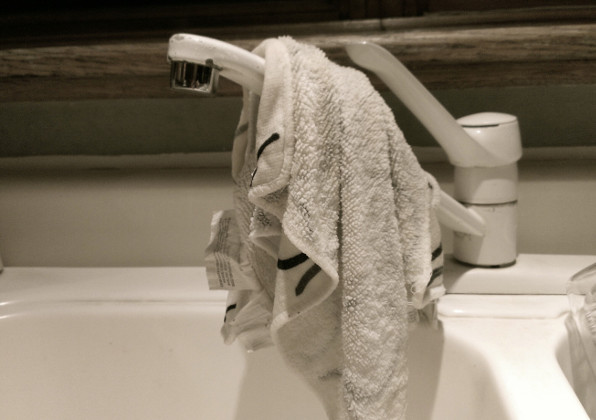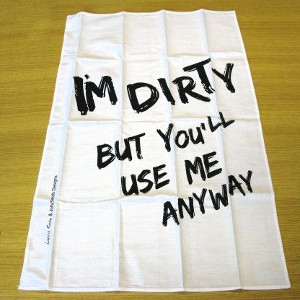In the restaurant biz, we call them ‘rags’. But you know them better as kitchen, bar or side towels. What you don’t know is that they can harbour a lot of germs and do more harm than good in your food preparation zone. Many of the famous FAT TOM factors used to gauge food safety apply…
 How long do you leave a kitchen towel hanging on the faucet?
How long do you leave a kitchen towel hanging on the faucet?
How many different things do you do with it?
FAT TOM is a food safety acronym to remind us of the conditions we should consider when storing and using foods safely:
F – Food type
A – Acidity
T – Time
T – Temperature
O – Oxygen exposure
M – Moisture content/exposure
Those same factors that can determine how quickly food will spoil can also make your kitchen towel a bigger bacterial risk. And new study suggests that other factors in your home can also contribute to the toxicity of your kitchen towels…
What they did…
Researchers from the University of Mauritius have shown that factors such as family size, type of diet, multi-usage of towels, among other factors, impact the growth of pathogens on kitchen towels, potentially causing food poisoning.
In the study, total of 100 kitchen towels were collected after one month of use. The researchers cultured the bacteria and identified them by standard biochemical tests. They also determined the bacterial load on the towels.
What they found…
“Our study demonstrates that the family composition and hygienic practices in the kitchen affected the microbial load of kitchen towels,” said Dr. Biranjia-Hurdoyal.”We also found that diet, type of use and moist kitchen towels could be very important in promoting the growth of potential pathogens responsible for food poisoning.”
Researchers found that 49% of the kitchen towels collected in the study had bacterial growth which increased in number with extended family, presence of children and increasing family size. The towels for multipurpose usage (wiping utensils, drying hands, holding hot utensils, wiping/cleaning surfaces) had a higher bacterial count than single-use towels and humid towels showed higher bacterial count than the dry ones. Out of the 49 samples which were positive for bacterial growth, 36.7% grew coliforms, 36.7% Enterococcus spp and 14.3% S. aureus.
Dry towels were found to be less susceptible to bacterial contamination than damp ones.
What it means…
The findings of the study imply that changing your kitchen towels frequently, employing a number of towels at the same time, and limiting their use to specific tasks can prevent cross-contamination in the kitchen and bacterial pick-up by users, which might make them sick.
All that is not to say that you should go to single-use paper towels. That would minimize the risk factors for bacterial contamination, but also generate a lot of additional paper waste, which is typically disposed of in the garbage (destined for the landfill), rather than recycled.
My take…
I say, use your cloth kitchen towels for one day and then toss them in the laundry. I reserve one towel for hands, one for counter tops and another for manipulating utensils. also make it a habit to use single-use towels when dealing directly with foods (wiping up Meat juice spills, wiping excess marinade off of Meats or drying off Poultry to ensure a nice crispy skin). And all the rules about avoiding cross-contamination on cutting boards and counter tops apply.
Have a safe, yummy summer!
~ Maggie J.

